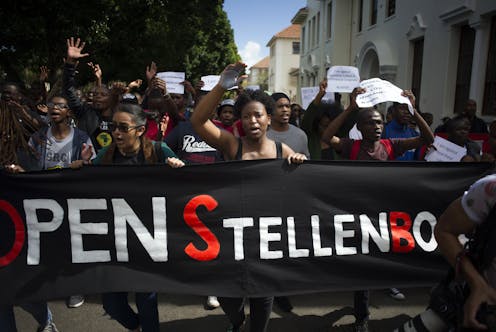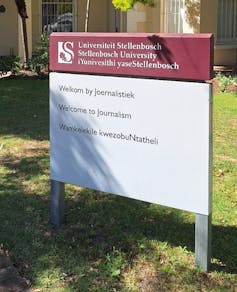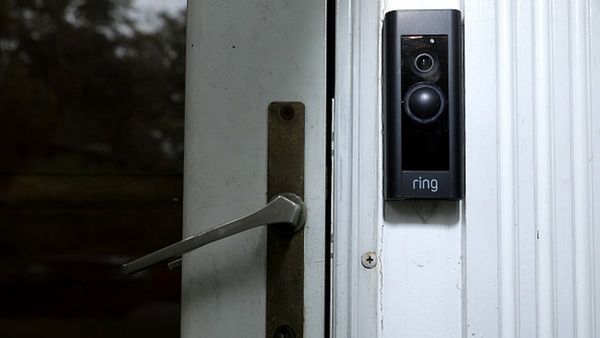
When South Africa became a democracy in 1994, five of the country’s universities used Afrikaans as a medium of instruction. There were also two bilingual universities teaching in Afrikaans and English.
Stellenbosch University, about 50km from Cape Town, is the oldest historically Afrikaans university. Over the past three decades English has gradually replaced Afrikaans in the core functions of teaching and research.
The status of Afrikaans at formerly Afrikaans or bilingual universities remains the subject of considerable debate. This has led to litigation and three judgments in South Africa’s apex court, the constitutional court.
Afrikaans is commonly categorised as an Indo-European language, related to Dutch. It can be more accurately described as a Creole language that developed after the Dutch colonised the Cape in 1652. In 1925, standardised Afrikaans became an official language alongside English. It subsequently became associated with white Afrikaner nationalism and, from 1948, apartheid education policies. In 1976, Black students mobilised against attempts to make Afrikaans a compulsory medium of instruction in schools.
I’m a sociologist who studies language and communication in science and higher education. In a recent article and presentation I examined the three phases in which the language shift and the decline of Afrikaans at Stellenbosch University has unfolded.
The first phase (1994-2002) involved an attempt to defend Afrikaans institutional monolingualism. The second (2002-2015) saw a shift to institutional bilingualism. Afrikaans and English were used in undergraduate classes. The final and current phase began with the 2015-16 #FeesMustFall student protests. Pressure for the transformation of a predominantly white campus escalated. This triggered a rapid shift to English.
In 2024, the university’s language policy is, on paper, a scaled-down version of institutional bilingualism (Afrikaans and English). However, in practice English is the main medium of instruction. Afrikaans is, increasingly, not used across all disciplines. This reflects the trend at other formerly Afrikaans or bilingual public universities.
There is a case to be made for defending Stellenbosch University’s position as a centre of Afrikaans language and culture. But the centralised language planning apparatus it has developed over the past two decades is simply unsustainable. This case study prompts a broader reflection on languages and language planning within South African higher education.
First, for reasons related to its global academic status and its national second-language status, English has emerged as the dominant language of teaching and research at South African universities.
The second issue has to do with the nature of “language” at different levels of the education system. The official languages adopted in 1994 are not uniform “mother tongues” or “vehicles” moving from basic education to PhD.
Languages are more than individual “competencies”: they are political and economic projects. They are also particularly expensive and difficult to “plan” in university teaching and research.
First phase (1994-2002)
In 1994, South Africa’s then-interim constitution recognised 11 official languages. It committed “the state” to “practical and positive measures to elevate the status and advance the use of these languages”.
Afrikaans universities faced a particular dilemma. How could they retain Afrikaans as a medium of instruction and open enrolment to formerly excluded Black students? These are generally second-language English speakers who opt to study in English.
Other historically Afrikaans institutions adopted parallel medium instruction. Stellenbosch University resisted this trend and asserted its autonomy as a monolingual institution. Postgraduate teaching and research, however, shifted to English. Afrikaans was reframed as an undergraduate teaching issue.
The university argued that the predominantly Afrikaans-speaking Western Cape and Northern Cape provinces needed an Afrikaans-medium university.
Two factors undermined this demographic argument. First, the university enjoys national status. This can be traced back to an elite Anglophone college system in the 19th century British Cape Colony. Second, after the 1994 transition, the university focused on internationalisation. It also established itself as a leading research-intensive institution. As a result it has increasingly attracted students and academics with little or no Afrikaans competency.
Second phase (2002-2015)
In the early 2000s South Africa’s higher education system was overhauled. This involved institutional mergers, which coincided with the adoption of the 2002 Language Policy for Higher Education. The policy effectively disestablished monolingual Afrikaans universities, stating:
The notion of Afrikaans universities runs counter to the end goal of a transformed higher education system.
Stellenbosch University adopted its first language policy and plan in 2002. Afrikaans was reframed as one of four undergraduate language options and described as “the default language of undergraduate learning and instruction”. A heated debate erupted in the Afrikaans media. In this first public – and acrimonious – taaldebat (language debate) many criticised the new “default” status of Afrikaans. That’s because, like a default setting on a computer, this option could be switched.

The new policy introduced formal language planning as an institutional process that would involve periodic policy updates. It also presented three module “options” that represented possible routes away from institutional monolingualism.
First, dual medium instruction involved using both English and Afrikaans in one lecture. Second, parallel medium instruction involved separate lectures in English and Afrikaans. Third was an English medium option. However, the second and third options were reserved for “exceptional circumstances”.
Within a few years, most modules shifted to the dual medium option. The university shifted to a dual medium form of institutional bilingualism. But a tacit racial assumption underpinned this model. The language policy ignored the growing enrolment of Black students and the appointment of Black staff members who didn’t have the required bilingual proficiency.
A new language policy, adopted in December 2014, tried to address the bilingual proficiency problem. It prioritised parallel medium instruction and “educational interpeting”. It never got off the ground.
Third phase (2015 to date)
Beginning in March 2015, a series of “Fallist” movements mobilised on South African campuses. A predominantly Black student movement called Open Stellenbosch was established. It aimed “to challenge the hegemony of white Afrikaans culture and the exclusion of Black students and staff”. Language policy was a key point of contention.
The university responded by redrafting its language policy. In June 2016 it established English as the primary medium of teaching at the undergraduate level.
This moment also marks the shift to what I term the second taaldebat. Afrikaans language activists now argued that English and Afrikaans ought to enjoy equal status. Institutional bilingualism became the new ideal framework for defending Afrikaans at Stellenbosch University.
Language activism included litigation, which ended in a constitutional court ruling. The court upheld the 2016 language policy review process. It also noted the “hard racial edge” to the evidence produced by Stellenbosch University. It remarked that:
Seen as a bloc, the new entrants for whom Afrikaans is an obstruction are not brown or white, but overwhelmingly Black.
Today, Stellenbosch remains notionally committed to “multilingualism”. In practice, this means a scaled down version of institutional bilingualism. It involves very limited parallel medium instruction and some simultaneous interpreting. English is the compulsory medium in modules where no duplication occurs.
Lloyd Hill received funding from the South African National Research Foundation (Grant #111845).
This article was originally published on The Conversation. Read the original article.







